The Short Everest Base Camp Trek offers a remarkable opportunity for adventurous souls seeking to explore the majestic Himalayas. This 12-day journey, starting and ending in Kathmandu, takes trekkers on a thrilling ascent to the iconic Everest Base Camp, offering breathtaking views of the world’s highest peaks. With a focus on acclimatization, culture, and comfortable accommodations, this trek promises an unforgettable experience for those willing to challenge themselves and witness the awe-inspiring beauty of the region. For those ready to embark on this extraordinary journey, the details that lie ahead may just surprise you.
Key Points
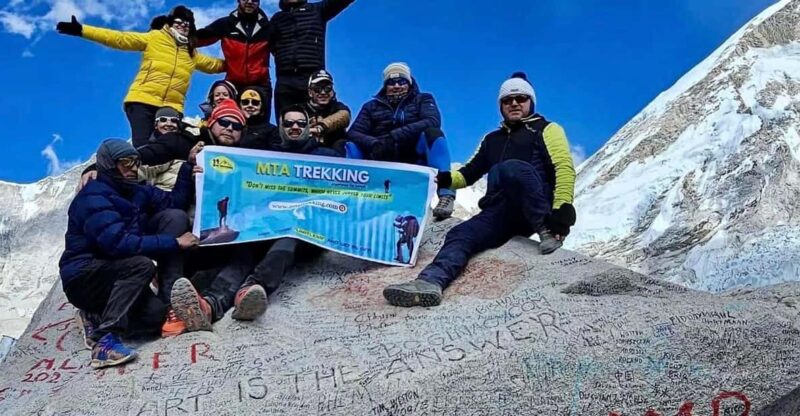
- A 12-day trekking expedition covering approximately 134km from Kathmandu to Everest Base Camp, reaching the highest point of Kala Patthar at 5,550m.
- The trek features scenic views of Mount Everest and the surrounding Himalayas, with key stops at Namche Bazaar, Deboche, Dingboche, and Lobuche.
- The trek includes essential services such as airport transfers, accommodation, an experienced guide, round-trip flights between Kathmandu and Lukla, and necessary permits.
- Preparation and packing recommendations include comfortable trekking shoes, warm clothing, trekking poles, and an understanding of altitude sickness symptoms.
- Accommodation is provided in guesthouses along the trekking route, with meals featuring Nepali cuisine and the opportunity to experience Sherpa culture.
Trek Overview
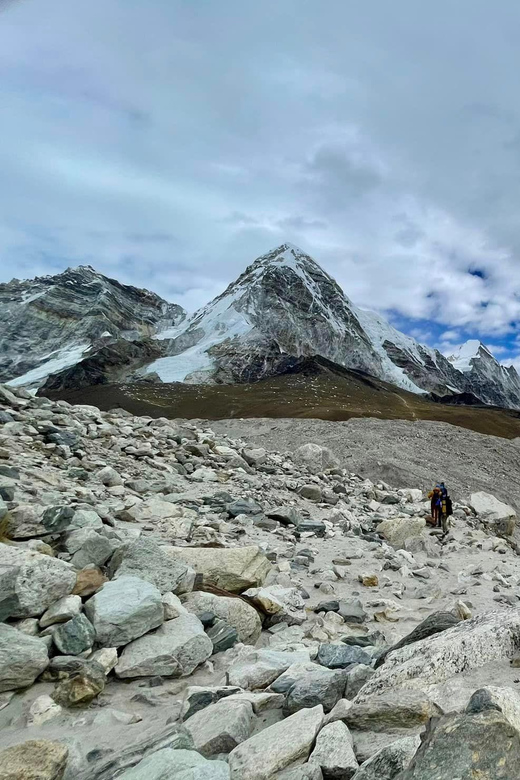
The Everest Base Camp trek typically lasts 12 days from Kathmandu and covers approximately 134km (83 miles). The cost for this trek ranges from $1,549.18 per person.
The highest point of the trek is Kala Patthar at 5,550m (18,208ft). The key trekking seasons are from March to May and September to November.
Proper planning for acclimatization is crucial to ensure the safety of trekkers, as the trek involves significant elevation gain.
The trek provides stunning views of the world’s highest peak, Mount Everest, and the surrounding Himalayan landscape.
You can also read our reviews of more tours and experiences in Pheriche.
Itinerary Highlights
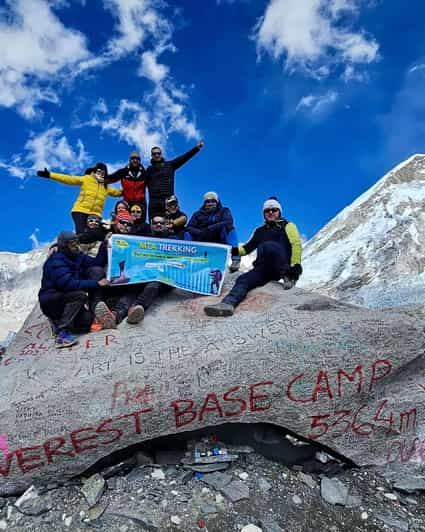
The Everest Base Camp trek follows a well-established itinerary that allows trekkers to gradually acclimatize to the high altitude.
Day 1 begins with a flight to Lukla (2,840m/9,317ft), followed by a trek to Phakding (8km).
On Day 2, they’ll trek to Namche Bazaar (10km, 3,440m/11,286ft), where they’ll acclimatize on Day 3.
The trek continues to Deboche (12km, 3,820m/12,532ft) on Day 4, and then to Dingboche (11km, 4,410m/14,468ft) on Day 5, with an acclimatization day on Day 6.
Trekkers will then reach Lobuche (8.5km, 4,910m/16,108ft) on Day 7 before completing the final leg to Everest Base Camp (5,364m/17,598ft) on Day 8.
Included Services
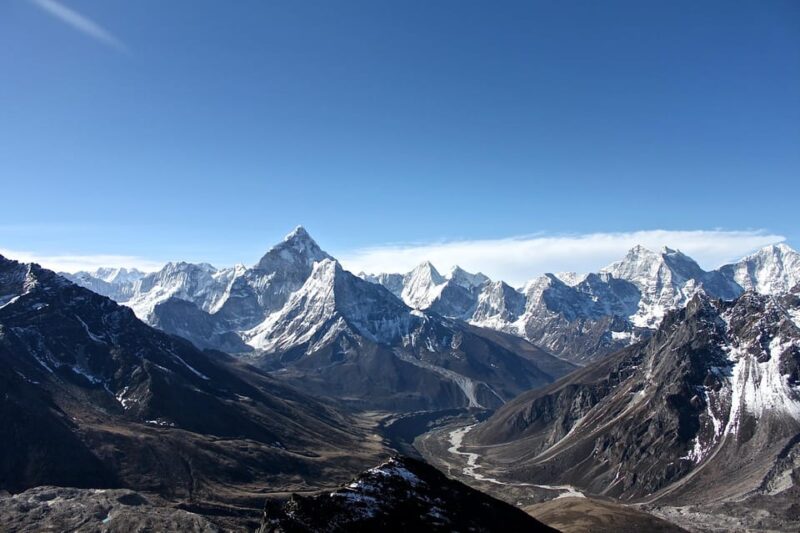
The Everest Base Camp trek package includes a range of services to ensure a seamless and comfortable experience for trekkers.
These services include:
- Airport transfers for pick-up and drop-off in Kathmandu
- Accommodation in Kathmandu and guesthouses during the trek
- An experienced and friendly guide to lead the way
- Round-trip flights between Kathmandu and Lukla
- Necessary permits, including Sagarmatha National Park and TIMS fees
Plus, the package provides essential equipment like sleeping bags, down jackets, a trekking map, and a first-aid medical kit.
While extras like beverages, personal expenses, tips, and excess baggage charges aren’t included, the provided services ensure a well-supported and worry-free Everest Base Camp adventure.
Preparation and Packing
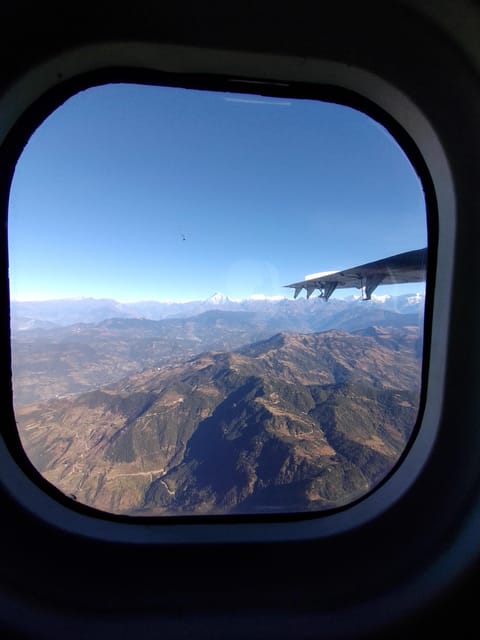
Preparing for the Everest Base Camp trek requires careful consideration of what to bring. Comfortable and well-broken-in trekking shoes, sunglasses, and a change of clothes are essential. Packing layers, including a warm jacket and rain gear, is crucial for the unpredictable mountain weather. Trekking poles can provide stability on the uneven terrain. Toiletries, cash, passport, and a camera to capture the stunning scenery are also recommended. Maintaining a high level of fitness through moderate hikes with incline or a backpack is advised. Understanding altitude sickness symptoms and the importance of proper acclimatization is crucial for a safe and enjoyable trek.
| What to Bring | Fitness | Altitude Awareness |
|---|---|---|
| Comfortable trekking shoes | Train for moderate hikes | Research altitude sickness symptoms |
| Sunglasses | Backpack training | Acclimatization is key |
| Change of clothes | ||
| Warm jacket and rain gear | ||
| Trekking poles |
Accommodation and Meals
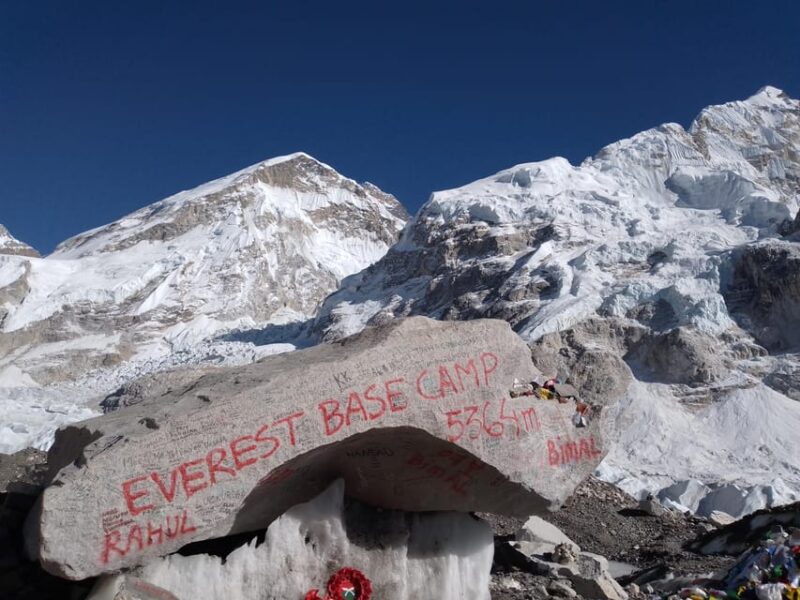
During the Everest Base Camp trek, trekkers are accommodated in guesthouses along the route.
These local lodges provide simple but comfortable accommodation, allowing trekkers to rest and recharge after each day’s hike.
The meals served are typically Nepali cuisine, including hearty staples like daal, rice, and curried vegetables. Some guesthouses also offer Western-style options.
Trekkers are encouraged to bring their own snacks and energy-dense foods to supplement the meals.
Accommodation and meals are included in the trek package, ensuring a hassle-free experience for participants.
The guesthouses prioritize cleanliness and offer a welcoming atmosphere, making them an integral part of the Everest Base Camp trekking experience.
Safety Considerations
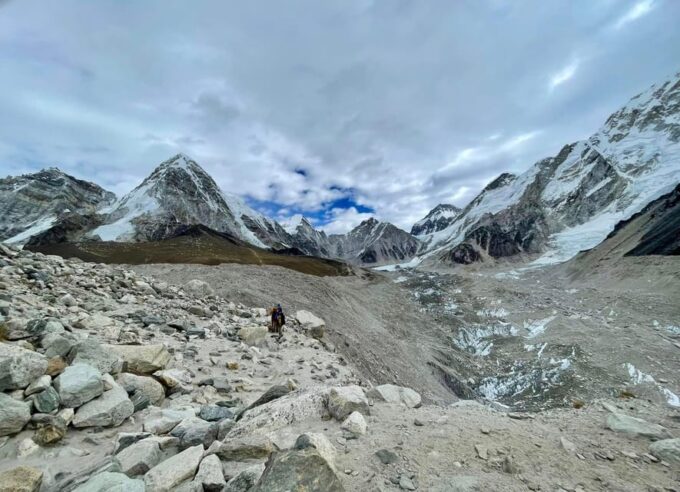
Safety is paramount when undertaking the Everest Base Camp trek. Proper acclimatization is crucial to prevent altitude sickness, which can be life-threatening. Trekkers should take their time, listen to their bodies, and be prepared to turn back if they experience symptoms. Plus, the weather in the Himalayas can be unpredictable, so hikers must be equipped with the right gear to handle changing conditions. The following table outlines the main safety considerations for the Everest Base Camp trek:
| Consideration | Importance | Mitigation |
|---|---|---|
| Altitude Sickness | High | Gradual ascent, acclimatization days |
| Weather Changes | High | Proper clothing, rain gear, and contingency planning |
| Dehydration | Moderate | Ample water intake, electrolyte supplements |
| Fatigue | Moderate | Pacing, rest breaks, and proper nutrition |
Cultural Experiences
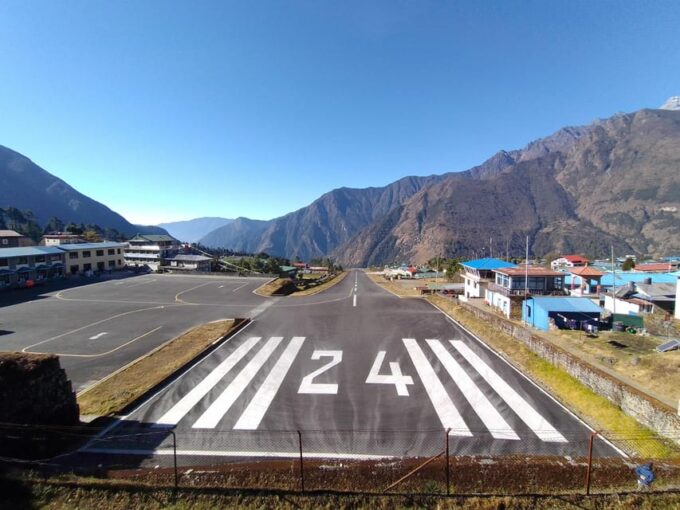
The Everest Base Camp trek offers trekkers a unique opportunity to enjoy the rich cultural tapestry of the Sherpa people. Along the way, you’ll encounter vibrant monasteries, colorful prayer flags, and the welcoming smiles of the local community.
Some cultural highlights include:
-
Visiting the Tengboche Monastery, a significant Buddhist site at the gateway to the Khumbu region
-
Observing traditional Sherpa dances and ceremonies in villages like Namche Bazaar
-
Exploring the local markets, where you can find handmade crafts, textiles, and Tibetan-inspired artwork
-
Experiencing the spiritual energy of Mani stone walls, inscribed with Buddhist mantras
-
Engaging with the Sherpa people and learning about their centuries-old mountain traditions.
Frequently Asked Questions
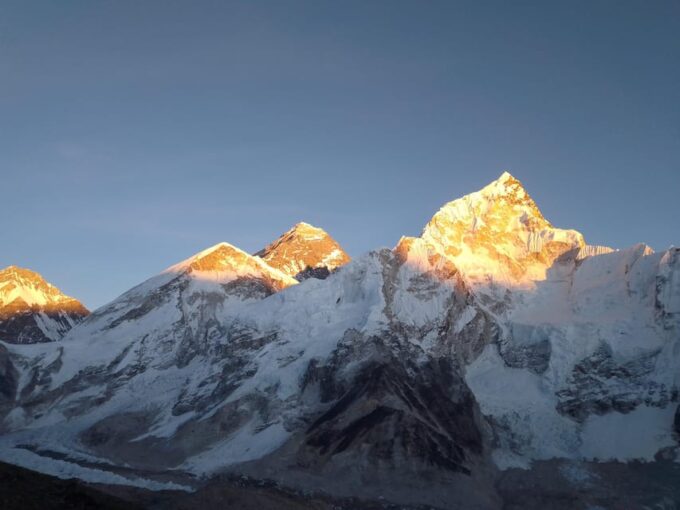
As trekkers plan their Everest Base Camp journey, they often have questions that need addressing.
What’s the best time of year to trek? March to May and September to November offer the most favorable weather.
What’s the average cost? Expect to pay around $1,549.18 per person.
How fit do I need to be? Train for moderate hikes with incline or a backpack.
What should I pack? Bring comfortable shoes, warm layers, trekking poles, and essential toiletries.
How do I acclimatize safely? Proper planning and gradual ascent are key to avoiding altitude sickness.
With the right preparation, trekkers can embark on this unforgettable adventure to the foot of the world’s highest mountain.
Frequently Asked Questions
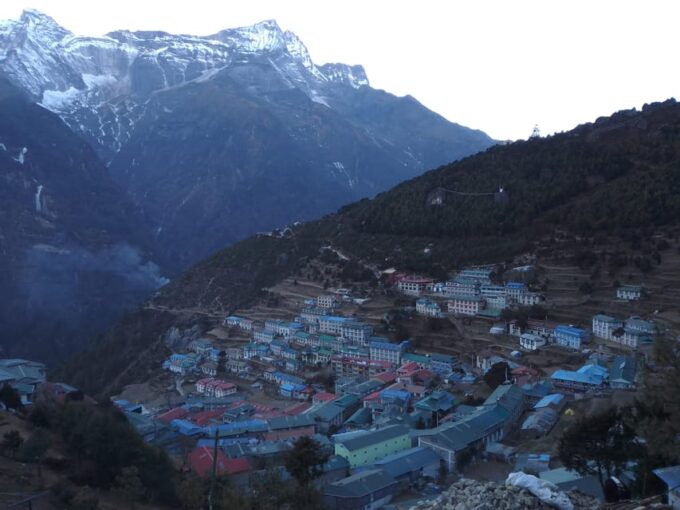
Can I Extend the Trek Beyond 12 Days?
Yes, the Everest Base Camp trek can be extended beyond the 12-day itinerary. Travelers can choose to add more acclimatization days, visit additional destinations, or extend the trek’s duration to explore the Everest region further.
What Is the Typical Group Size for This Trek?
The typical group size for this trek is generally small, ranging from 2 to 10 people. This allows for a more personalized and flexible experience during the trek. Group size may vary depending on the trekking company and individual preferences.
Are There Any Visa Requirements for This Trek?
Trekkers require a Nepalese visa to participate in this trek. The visa can be obtained upon arrival at Kathmandu airport or in advance online. Proper documentation and fees are necessary to ensure a smooth entry into Nepal.
Can I Book This Trek as a Solo Traveler?
Yes, solo travelers can book this trek. The tour operator organizes group treks, making it easy for solo travelers to join and meet fellow trekkers. Solo travelers should consider the risks and prepare adequately for the journey.
Is There an Option to Upgrade the Accommodation During the Trek?
Yes, there is an option to upgrade the accommodation during the Everest Base Camp trek. Trekkers can choose to stay in higher-end lodges or tea houses for a slightly higher cost, offering more comfortable amenities.
Recap
The Short Everest Base Camp Trek provides a thrilling 12-day adventure, culminating at the iconic Everest Base Camp. Trekkers ascend to breathtaking heights, enjoy Sherpa culture, and enjoy comfortable accommodations. With careful preparation and safety considerations, this trek offers a memorable journey through one of the world’s most stunning landscapes, best undertaken during the spring or fall seasons.
You can check availability for your dates here:More Tour Reviews in Pheriche
Not for you? Here's more things to do in Pheriche we have recnetly reviewed
- 2 Best Guided Tours In Pheriche
- 3 Best Tours In Pheriche
- 5 Best Helicopter Flights And Tours In Pheriche
- 17 Best Hiking And Trekking Tours In Pheriche
- Everest Base Camp Trek 14 Days
- From Lukla: 10 Day Everest Base Camp With Kalapatthar Trek
- Everest Base Camp With Kalapatthar Guided Trek 12 Days
- From Lukla: 10 Day Everest Base Camp With Kalapatthar Trek
- Kathmandu: 12-Day Everest Base Camp Trek
- From Kathmandu: 12DAY Everest Base Camp Trek
- From Lukla: 11 Day Everest Base Camp With Kala Patthar Trek
- Everest Base Camp Trek- 14 Days
